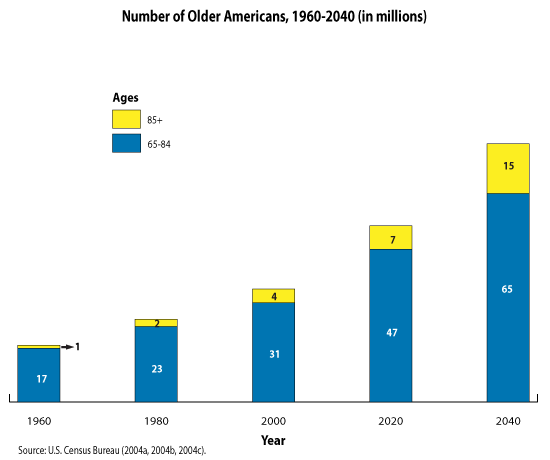Recruiting ain’t easy, no matter the economic situation. Finding that perfect fit is always like finding a needle in a haystack. And you know what’s worse? Finding the perfect needle (so to speak) but not persuading them to leave their haystack for yours. Now there are many factor that impede this mission but one that few Sourcers tend to think about it employee benefits. If a company you are targeting offers superior benefits (and salaries, but let’s stick with benefits for now) then you are really adding more days to your time to fill. I want to give you something to think about – elder benefits. Here are a few stats from the Family Caregiver Alliance.
- More than 1 in 6 Americans working full-time or part-time report assisting with the care of an elderly or disabled family member, relative, or friend. Caregivers working at least 15 hours per week indicated that this assistance significantly affected their work life.
- 69% of working caregivers caring for a family member or friend report having to rearrange their work schedule, decrease their hours, or take an unpaid leave in order to meet their caregiving responsibilities.
- Single females caring for their elderly parents are 2.5 times more likely than non-caregivers to live in poverty in old age.
Elder care benefits are needed, wanted, and provide a great incentive for employee retention as well as talent attraction. If an employer can ease these aspect of their employees’ lives, well, its a near-irresistible perk for a lot of people. Check out this quote from ALM Benefits Pro.
As employees’ parents and family members grow older, many workers take on the role of caregiver. More than 1 in 6 Americans working full-time or part-time report assisting with the care of an elderly or disabled family member, relative or friend. Of this group, nearly half report feeling they have no choice about taking on these responsibilities. That is why many struggle in silence, choosing not to share their situation with employers out of fear for the impact on their career or a desire for privacy.
So, if you are engaging with candidates and you cannot compete on salary or offer a better elder care perk, it will be very challenging to lure them away. (Remote work would definitely help, but that is no longer rare these days.) So, what is the best way to proceed in attracting top talent away from your competitors? First and foremost, make sure your company is offering elder care benefits! If they are not, suggest it to HR now as a retention and recruitment tool that will save money for the company in the long-term. To get you started, here are a few vendors to consider:
Second on the to-do list is to conduct some market research. Investigate which competitors have minimal elder care offerings. Scour their careers pages, read benefits summaries, and examine employer review sites where employees frequently share details about benefits. And third, follow that up with some good old fashioned candidate engagement. When reaching out to prospective candidates, highlight your organization’s elder care solutions in your initial introduction. Emphasize how these offerings ease the caregiving burden and foster a supportive work environment. If possible, feature stories from current employees who have benefited from your elder care program. Real-life accounts provide credibility and give your targets a tangible sense of how your company goes above and beyond standard benefits. (And further down the interview process) provide concrete information about leave policies, DCAP contributions, and how respite care is arranged.
Finally, if a picture is worth a thousand words, consider this quote and chart from Urban Institute.
The number of Americans ages 65 and older will more than double over the next 40 years, reaching 80 million in 2040. The number of adults ages 85 and older, the group most often needing help with basic personal care, will nearly quadruple between 2000 and 2040.

As elder care responsibilities become increasingly common, showcasing robust elder care benefits can be the deciding factor for sought-after talent weighing multiple opportunities. By staying informed about competitors’ offerings, highlighting your company’s caregiver-friendly programs, and sharing real-life success stories (when possible), you demonstrate genuine empathy for employees’ personal situations—often tipping the scale in your favor. Offering a supportive environment for caregivers not only attracts top-tier candidates but also cultivates loyalty and ensures long-term retention, turning what might seem like a specialized benefit into a strategic advantage for your organization. Right now, it seems like not enough companies are thinking this way. Before long, I suspect it will be the status quo.
